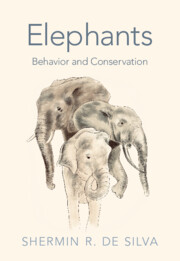5 - Elephants in Ecosystems
Published online by Cambridge University Press: 12 December 2024
Summary
By virtue of sheer size, elephants are ecosystem engineers like no other. This chapter explores their interactions with plants, parasites and commensals, natural resources, and anthropogenic elements. As always, the versatility and adaptability of elephants originates with an understanding of their dietary breadth, from the Siberian steppes to the Southeast Asian rain forests. Aside from their obvious relationships with their forage and ecological roles as consumers and seed dispersers, elephants themselves act as hosts to other species. Some may depend on elephants as much as their food plants, while others represent new perturbations in the novel environments and opportunities presented by a warming world. The physical activities of elephants contribute to nutrient cycling, while their need for particular earth and soil features remains little understood. The ultimate dietary supplementation derives from resources willingly or unwillingly supplied by humans, to which elephants and other wildlife are increasingly exposed. The “landscape of fear” provides one means of studying how elephants may be responding to human activities and presence.
Keywords
- Type
- Chapter
- Information
- ElephantsBehavior and Conservation, pp. 101 - 127Publisher: Cambridge University PressPrint publication year: 2024

